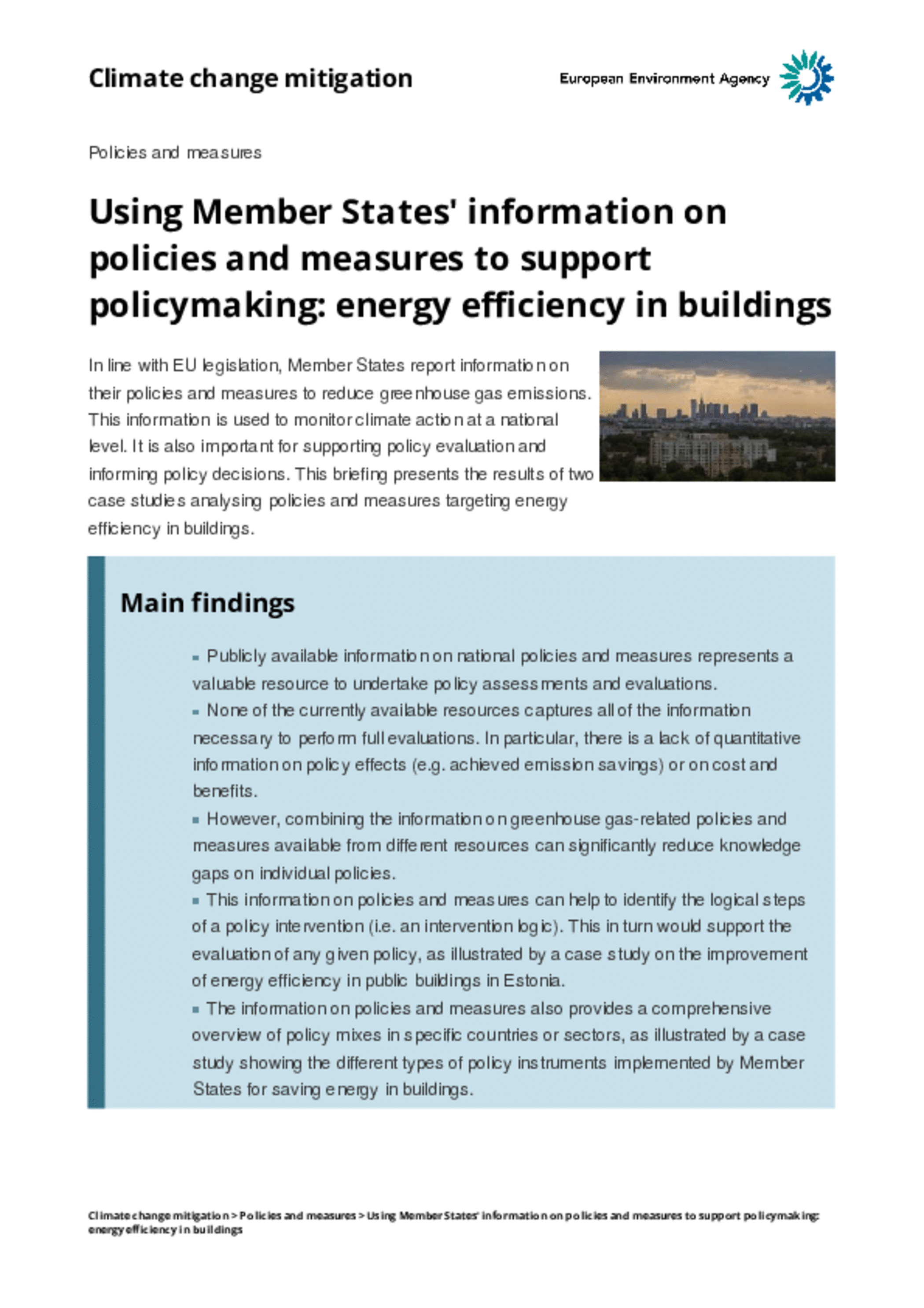All official European Union website addresses are in the europa.eu domain.
See all EU institutions and bodiesBriefing 8/2018
In line with EU legislation, Member States report information on their policies and measures to reduce greenhouse gas emissions. This information is used to monitor climate action at a national level. It is also important for supporting policy evaluation and informing policy decisions. This briefing presents the results of two case studies analysing policies and measures targeting energy efficiency in buildings.
ISBN: 978-92-9213-977-3

